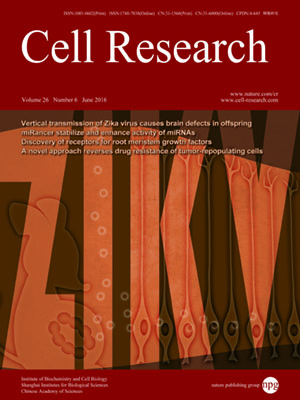
Volume 26, No 6, Jun 2016
ISSN: 1001-0602
EISSN: 1748-7838 2018
impact factor 17.848*
(Clarivate Analytics, 2019)
Volume 26 Issue 6, June 2016: 747-750 | Open Access
LETTERS TO THE EDITOR
CircRNA-derived pseudogenes
Rui Dong1, Xiao-Ou Zhang1, Yang Zhang2, Xu-Kai Ma1, Ling-Ling Chen2,3 and Li Yang1,3
1Key Laboratory of Computational Biology, CAS-MPG Partner Institute for Computational Biology, CAS Center for Excellence in Brain Science and Intelligence Technology, Shanghai Institutes for Biological Sciences, Chinese Academy of Sciences, Shanghai 200031, China
2State Key Laboratory of Molecular Biology, Institute of Biochemistry and Cell Biology, CAS Center for Excellence in Molecular Cell Science, Shanghai Institutes for Biological Sciences, Chinese Academy of Sciences, Shanghai 200031, China
3School of Life Science, ShanghaiTech University, Shanghai 200031, China
Correspondence: Li Yang,(liyang@picb.ac.cn)
Circular RNAs (circRNAs) from pre-mRNA back-splicing have been recently re-discovered genome-wide in metazoans by taking advantage of RNA deep-sequencing (RNA-seq) of the non-polyadenylated transcriptomes and specific computational pipelines that can retrieve the non-colinear back-splicing junction reads1,2,3,4,5. Despite being inefficiently processed and mostly expressed at a low level1,2,6,7,8, some circRNAs are derived from genomic loci associated with human diseases9, and increasing lines of evidence have suggested their potential roles in transcriptional, post-transcriptional and translational regulation10. However, nothing is known about whether these exceptionally stable circRNAs can be retrotranscribed, and ultimately inserted back into the host genome as processed pseudogenes.
10.1038/cr.2016.42
FULL TEXT | PDF
Browse 1783


